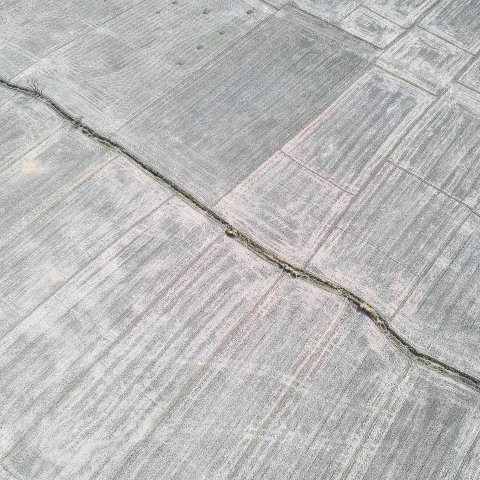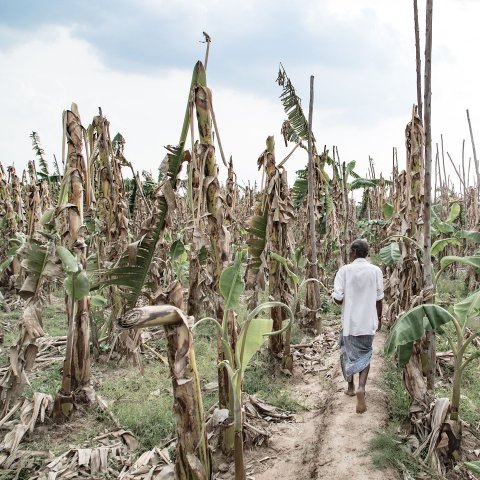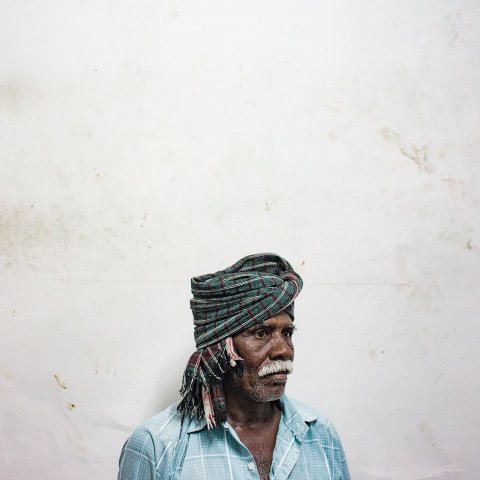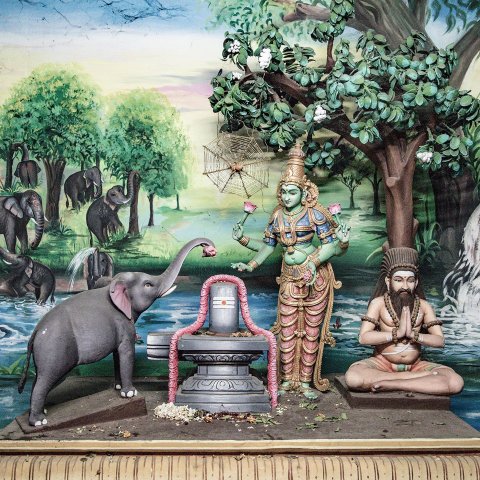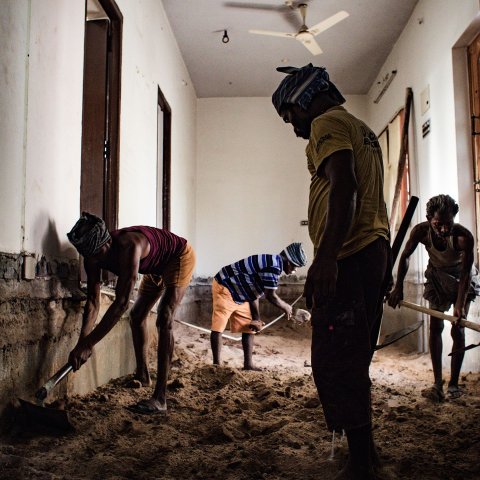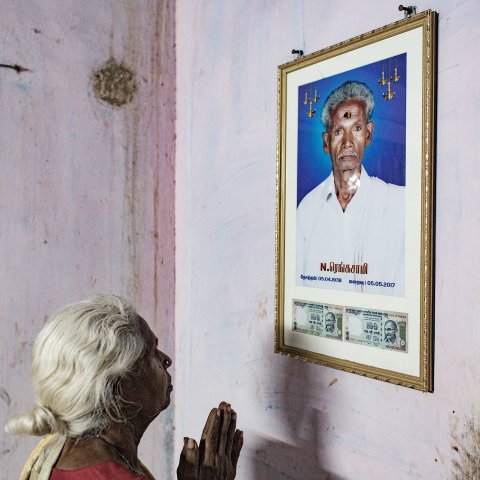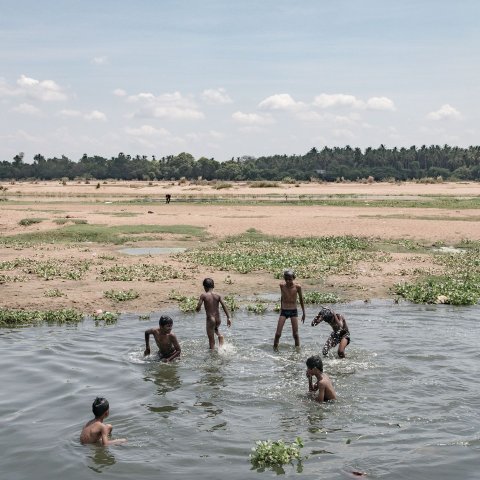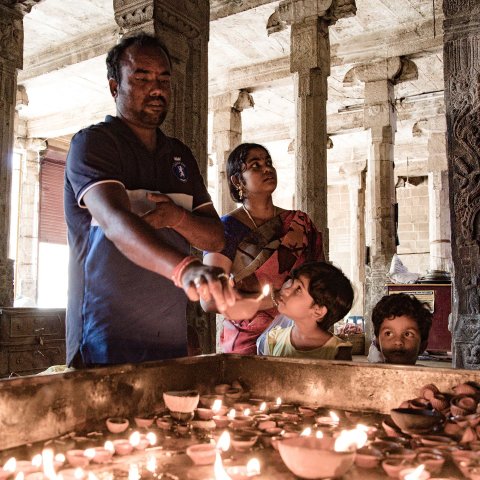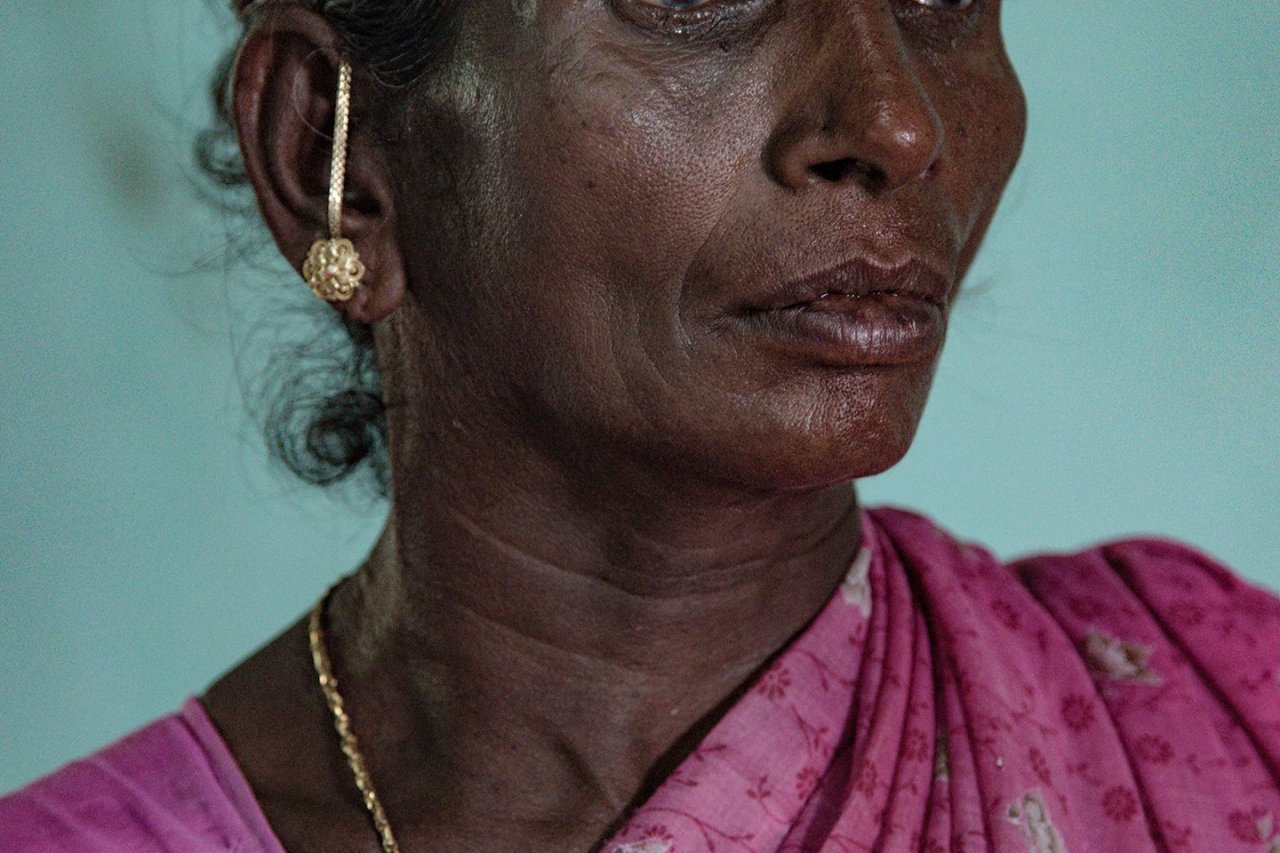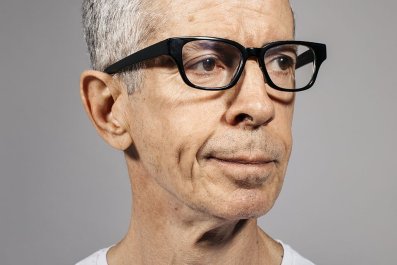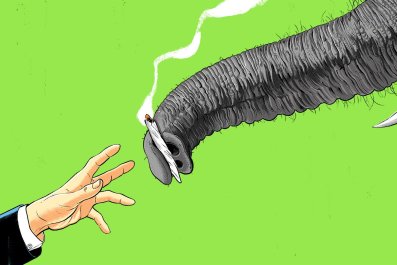A few months after Radha Krishnan took his life, his wife, Rani, was holding her husband's skull in her sun-beaten hands—the most powerful evidence she could find of a growing disaster back home. She had joined 1,000 farmers in traveling thousands of miles to New Delhi to demand a drought relief package for the farmers of Tamil Nadu, India's southernmost state.
Krishnan's public suicide was a last, hopeless protest. In February 2017, after his crops had failed for the third year in a row and with no chance of repaying his loans, he sat on the street outside the local bank and drank from a bottle of pesticide. He died a few hours later, leaving his wife and four children.
An estimated 59,300 farmers in India have taken their lives in similarly overt ways since 1980. Italian photographer Federico Borella believes the number could be much higher. "There is a great deal of shame associated with suicide in India, and I suspect many don't report it," he says. Shame is also associated with failure, particularly among men. In 2011, a study of farmer self-harm in the state of Andhra Pradesh found that even failing at suicide brought ridicule; unable to bear the "disgrace," they would try again.
In May, Borella was invited to Tamil Nadu by the South Indian Farmers Association, the group that had organized the demonstration in New Delhi. Borella was introduced to four families in the Tiruchirappalli area, each of whom had lost the head of their household to self-harm. Two of the men hanged themselves in their fields. Another, like Krishnan, drank poison.
Similar stories are told across India. The cycle of drought, debt and suicide is spreading like a plague.
Agriculture is still a major source of income, accounting for 14 percent of India's gross domestic product. Tamil Nadu, a leading producer of bananas, mangoes, rice, turmeric, sugarcane and coffee, among other crops, is dependent on the monsoons that recharge the local water sources: the southwest monsoon, from June to September, and the northeast, from October to December.
Beginning in 2014, the rains stopped coming. The state is now facing its worst drought in 140 years. The government has promised aid, but little has come. In many cases, farmers are forced to sell their products to companies far below market value. When farmers do lose their crops, minimal compensation is offered.
Over half of India now faces high to extremely high water stress, according to the World Resources Institute. Levels in the sacred Ganges, which supports 1.3 billion people and is the country's largest river, are declining precipitously—some say by a fourth. Erratic and nonexistent monsoons mean the country's reservoirs are at their lowest in a decade. And nowhere in the world are groundwater declines greater than in northern India, with much of what remains containing toxic levels of arsenic and fluoride.
It is estimated that 15 million Indian farmers have already abandoned their land, and more will follow as temperatures rise. The current prediction: an increase of another 5 degrees Fahrenheit (3 degrees Celsius) by 2050. Imagine the chaos and destabilization that will occur if agriculture collapses and potable water disappears in just India. "The impact of climate change goes beyond Indian boundaries," says Borella. "It threatens mankind as a whole."
Every inhabited continent is facing high water stress. All it takes is a few bad rainfall years, or poor management of resources (not to mention pollution), to wreak havoc. The World Health Organization estimates that climate change is causing 12.6 million deaths a year—a figure estimated to rise by 250,000 between 2030 and 2050.
The correlation between suicide rates and rising temperatures was long suspected but never uncovered in large-scale data until research released in July 2017. Tamma Carleton—then a Ph.D. candidate in agriculture and resource economics at University of California, Berkeley—made the connection in a study published by the Proceedings of the National Academy of Sciences. "Suicide is a stark indicator of human hardship, yet the causes of these deaths remain understudied, particularly in developing countries," Carleton wrote. In India, where one-fifth of the world's suicides occur, according to Carleton, "the climate, particularly temperature, has a strong influence over a growing suicide epidemic."
Using nationally comprehensive panel data over 47 years, Carleton showed a link between suicide and higher temperatures that occurred only during India's agricultural growing season, when heat lowers crop yields. A temperature increase of a single degree Celsius in one day, she found, corresponded to about 67 suicides, on average.
In Tamil Nadu, a land once crisscrossed by majestic rivers, there are highways of sand as far as the eye can see. "The heat there is staggering," says Borella, who experienced temperatures approaching 120 degrees Fahrenheit at 8 p.m. Local children, in search of relief, dive into what little standing water remains—all of it dark, stinking and fed by sewage. "One of the problems is that there are no facilities to catch rain when it does fall. And the adjacent state of Karnataka, which has a dam, refuses to reroute any of their resources."
There are more entrenched challenges too. Borella remembers watching a group of people enter a temple to pray. "Before you can go in, you must cleanse yourself with clean water," he says. "I noticed that the water ran from the spout even if no one was there. I was shocked by the waste. I asked why they would do that and was told that religion is always more important."
In each of the four homes Borella visited, people prayed to a photograph of the deceased. "Since I was there," he says, "one family placed three photographs on the wall of their home in one day: a father and his two sons."
An ancient Tamil poem, "Pattinappaalai," tells of the Kaveri River, which would keep flowing even in warmer months, an expression of the gods' mercy. But the gods, it seems, as well as the Indian government, have abandoned their farmers.
